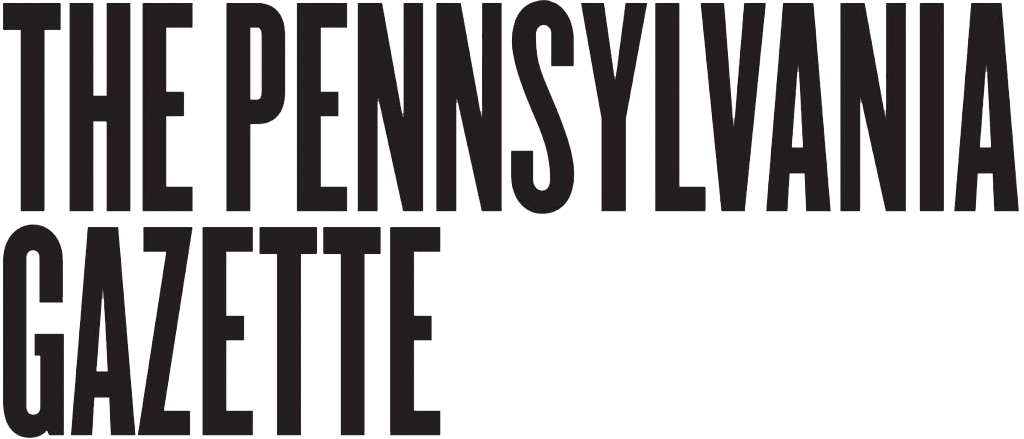
A flurry of destabilizing executive orders has hit Penn and other institutions.
As the Gazette was going to press in mid-April, the University was facing the loss of $175 million in federal research funding over the participation of transgender woman swimmer Lia Thomas C’22 on the women’s swimming team three years ago, and hundreds of millions of dollars more were at risk in the wake of executive orders issued by President Donald J. Trump W’68. Although ongoing lawsuits or other circumstances could restore funding, in early March the University announced a series of proactive moves—including hiring and salary freezes, reductions in graduate student admissions, and other cost-cutting measures—to prepare for the possible repercussions of extensive cuts.
A number of schools have been singled out by the administration for suspension of grant funding over alleged violations of Title IX or Title VI guidelines, including fellow Ivy League institutions Columbia, Princeton, Brown, Cornell, and Harvard universities. In Penn’s case, media reports emerged on March 19 that the White House was “pausing” $175 million in grants from the Departments of Defense and Health and Human Services because Penn had allowed Thomas to participate on the women’s swimming team in the 2021–22 season, during which she won a NCAA championship in the 500-yard freestyle [“Sports,” May|Jun 2022]. Separately the University had also been notified in February that it was under investigation by the Office of Civil Rights (OCR) for Title IX violations in regard to its athletic participation policies.
In a March 25 statement Penn President J. Larry Jameson told the University community that Penn has never had its own policy on transgender athletic participation but has consistently followed Title IX guidance and NCAA rules for Division I sports. From 2010 until the day after Trump’s executive order “Keeping Men Out of Women’s Sports” was issued on February 5—at which point the NCAA revised its policies—those rules “required that transgender student-athletes be permitted to participate on college teams.”
In response to an inquiry from the OCR on February 13, 2025, Jameson continued, “we affirmed that during the 2021–2022 season, we followed NCAA rules and applicable law as they existed then, and that we now comply with the NCAA policy and the law as they exist today. We expect to continue to engage with OCR, vigorously defending our position.”
Despite Penn’s compliance, stop work orders totaling about $175 million on federally contracted research had been received by faculty in seven schools, Jameson added, including “research on preventing hospital-acquired infections, drug screening against deadly viruses, quantum computing, protections against chemical warfare, and student loan programs.” He went on to note that these orders have come on top of the previous cancellation of several federal grants and delays in the awarding of grants. “We are actively pursuing multiple avenues to understand and address these funding terminations, freezes, and slowdowns.”
While higher education institutions have been blindsided by the freezing, slowdown, and continuing uncertainty over federal grants, another order directing the National Institutes of Health to impose a 15 percent limit on allowable indirect costs for grants could have an even more far-reaching impact, endangering the whole infrastructure of higher education and US leadership in science in the post-World War II era. Penn currently receives around $1 billion in federal funding annually, and such a change would translate into a yearly loss of $240 million, according to University estimates, rising to $315 million if other federal agencies followed suit.
“NIH-funded research at Penn has enriched the world in innumerable and lifesaving ways,” Jameson wrote in a February 11 message to the Penn community following the announcement, “whether combatting cancer with CAR T therapy; developing vaccines with mRNA technology; creating gene editing tools and advancing gene therapy cures; developing drugs that treat a range of maladies, including those that combat macular degeneration and rare forms of congenital blindness—the list is long and powerful in its impact. The reduction in funds announced by the federal government would blunt this critical, lifesaving work.”
Previously, the allowable percentage for indirect costs was negotiated between schools and the government “using a rigorous review process,” Jameson wrote. Penn’s agreed upon rate of 62.5 percent still only covers half of costs for things like specialized lab construction, utilities, technical equipment, regulatory compliance, and other infrastructure items.
On March 25, Jameson wrote: “Federal funding freezes and cancellations jeopardize lifesaving and life-improving research, the loss of which will be felt by society and individuals far beyond our campus for years to come.” Beyond the scientists directly affected, such actions profoundly affect students and younger faculty just starting their research careers, he added.
“We value the long-standing partnership with the federal government to carry out research that makes America stronger and healthier. Robust federal research support for more than 75 years has made America’s higher education system the envy of the world. I hope we can restore trust and refocus on creativity, innovation, and training.”
Further cause for concern over revenues comes from proposals to increase the excise tax on university endowments and reduce student loan programs and eligibility. Endowment funds, which cover about 20 percent of Penn’s annual budget, mostly can’t replace lost revenue from other sources, since their use is restricted to particular purposes and they are supposed to last in perpetuity.
On March 10 Provost John L. Jackson Jr. and Senior Executive Vice President Craig Carnaroli W’85 announced the implementation of a set of measures designed to “protect our institution’s core principles and support existing people and programs.”
These included a review of spending for new buildings, renovations, and other capital projects that are not fully funded or deemed essential; freezes on most staff hiring and mid-year salary adjustments and reclassifications; a review of faculty hiring; an overall five percent cut in non-compensation expenses for the current and next fiscal year; and a review of restricted funds to ensure that they’re “used for permitted purposes and maximize support of current operations.” Graduate admissions for next year have also been reduced over funding concerns.
The University is also managing compliance with an executive order issued on Trump’s first day in office to dismantle “illegal” diversity, equity, and inclusion (DEI) programs, and meanwhile working to find ways to support international students and scholars who may face possible deportations, travel bans, and other hostile measures. A running theme in Jameson’s communications—all of which can be read on the Office of the President’s homepage or a new website that University Communications launched to track federal government updates—is that, in meeting current challenges, Penn would hold fast to its core values, which “like our University motto, have served Penn well for centuries and through many societal shifts.”
“I have heard from many that while we must remain agile, we must foremost protect Penn’s soul,” he wrote on February 24. “I passionately agree and reaffirm Penn’s enduring values and principles. Among these are:
• “Our essential missions: Everything we do must be grounded in advancing Penn’s world-class teaching, research, clinical care, and service. This focus is especially important in times of turbulence and uncertainty.
• “Academic freedom: Everything we do must support freedom of inquiry and thought, open expression, and the rigorous pursuit of truth. These elements are essential to how we contribute to the world.
• “Opportunity, Access, and Support: Everything we do must be anchored in principled non-discrimination, expanding access, and embracing diversity in all its form—all while following the law, which we will continue doing. These commitments to our culture have made Penn a pioneer in higher education for more than a century. We are stronger for it. A commitment to inclusive excellence has advanced research, scholarship, and patient care in profound ways.”
In his first message on January 28, Jameson concluded: “I ask every member of the Penn community to come together and do what we must: take care of one another, seek help when needed, and ensure the continuation of our critically important work. Together, we will protect and preserve what defines us as Penn.” —JP




